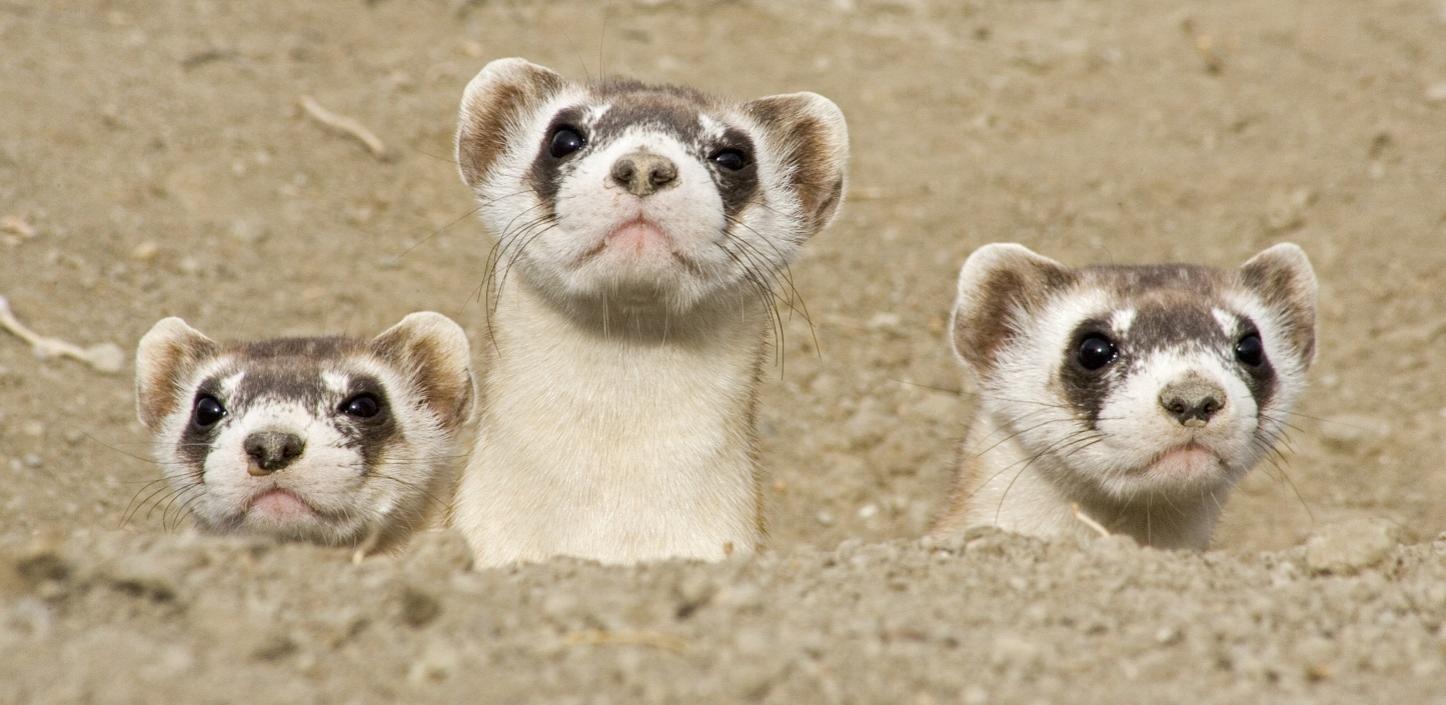
Buying time for species on the brink of extinction
“Niff” and “Wiff,” two 6-month-old black-footed ferrets raised in captivity by the U.S. Fish and Wildlife Service, peeked timidly out of the pet carriers they had ridden in during the long ride to a conservation site near Lamar, Colorado.
The entrance of a prairie dog tunnel beckoned just inches away, but the youngsters needed a bit of a jostle to leave the crates behind and enter their natural environment in the grasslands of the Southern Plains. Eventually, Niff and Wiff (named after the acronym for the National Fish and Wildlife Foundation) darted out of the carriers and into the tunnels, adding two more individuals to the tiny population of this endangered species.
Throughout 2022, NFWF moved quickly to make time-sensitive investments to stem the loss of declining or endangered species.
NFWF grants fueled efforts by biologists to develop new ways of fighting the drastic decline in bat numbers due to white-nose syndrome.
Other projects restored habitat for Mojave desert tortoises in the desert Southwest and gopher tortoises in the longleaf pine forests of the Southeast.
Rare and declining freshwater species across the nation also benefited from quick action by NFWF and its many grantees. Apache trout and other threatened or endangered desert fish such as Gila chub and Pecos gambusia will reap the benefits of conservation projects unfolding in streams and across the landscapes that feed into them.
Across the nation, NFWF grantees raced the clock to keep threatened or endangered bird species from becoming extinct. Hawaiian petrels, California condors, piping plovers, least Bell’s vireos, Hawaiian crows (or ‘alalā), Puerto Rican parrots, red-cockaded woodpeckers, southwestern willow flycatchers and so many more species all gained immediate benefits.
NFWF grants enabled crews in remote areas of the Pacific Ocean to remove derelict fishing nets that can entangle and kill endangered Hawaiian monk seals. Others helped decrease the number of endangered sea turtles killed as bycatch in commercial fisheries.
And in Florida, beloved but beleaguered manatees will soon have a new facility in which to rest and recuperate following strandings or periods when sea grasses and other submerged vegetation become scarce.
